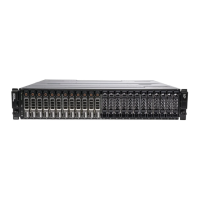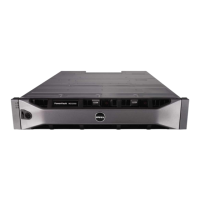Preparing Your Systems for Clustering 59
c
To save information from particular sections of the storage array
profile, select the
Select
Sections
option and click on the check boxes
corresponding to the sections that you want to save.
d
Select an appropriate directory.
e
In
File Name
field, type a file name of your choice. To associate the
file with a particular software application that opens it, specify a file
extension, for example
.text
.
NOTE: The file is saved as ASCII text.
f
Click
Save
.
6
To exit the storage array profile, click
Close
.
Status Icons
Status icons identify the six possible health status conditions of the storage
array. For every non-optimal status icon, use the Recovery Guru to detect and
troubleshoot the problem. The six possible health status conditions are
described below:
• Optimal—Every component in the managed array is in the desired
working condition.
• Needs Attention—A problem exists with the managed array that requires
intervention to correct it.
• Fixing—The
Needs Attention
condition has been corrected and the
managed array is currently changing to an
Optimal
status.
• Unresponsive—The storage management station cannot communicate
with the array, one controller, or both controllers in the storage array. Wait
at least five minutes for the storage array to return to an
Optimal
status
following a recovery procedure.
• Unsupported—The node is not supported by this version of MDSM.
• Software Unsupported—The storage array is running a level of software
that is no longer supported by MDSM.
book.book Page 59 Monday, July 25, 2011 3:18 PM

